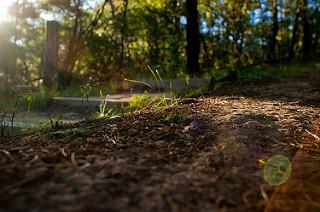World’s soils have lost 133 billion tonnes of carbon since the dawn of agriculture, study estimates
Amount of carbon released from the Earth is about the same as released by deforestation

Your support helps us to tell the story
From reproductive rights to climate change to Big Tech, The Independent is on the ground when the story is developing. Whether it's investigating the financials of Elon Musk's pro-Trump PAC or producing our latest documentary, 'The A Word', which shines a light on the American women fighting for reproductive rights, we know how important it is to parse out the facts from the messaging.
At such a critical moment in US history, we need reporters on the ground. Your donation allows us to keep sending journalists to speak to both sides of the story.
The Independent is trusted by Americans across the entire political spectrum. And unlike many other quality news outlets, we choose not to lock Americans out of our reporting and analysis with paywalls. We believe quality journalism should be available to everyone, paid for by those who can afford it.
Your support makes all the difference.The degradation of the Earth’s soil by humans has been an environmental catastrophe on a similar scale to the deforestation of much of the planet, a new study suggests.
Experts estimated that 133 billion tonnes of carbon has been removed from the top two metres of soil since farming began some 12,000 years ago, about the same as the total amount lost from vegetation.
However the figure is still dwarfed by the 450 billion tonnes of carbon emitted since the Industrial Revolution began and humans started burning fossil fuels on an unprecedented scale.
Soil is obviously vitally important for the growth of crops that feed humans and livestock. Concern has been growing what some refer to as the “soil fertility crisis”, a problem that can be masked by the use of artificial fertilisers.
Carbon released from the soil also contributes to global warming.
But the researchers suggested the figures showed the potential for soil to absorb carbon, something that could be used to reduce the level of the greenhouse gas in the atmosphere by using different agricultural techniques.
Writing in the journal Proceedings of the National Academy of Sciences, they said: “The incredible rise of human civilizations and the continuing sustainability of current and future human societies are inextricably linked to soils and the wide array of services soils provide.
“Human population and economic growth has led to an exponential rise in use of soil resources.
“The consequences of human domination of soil resources are far ranging: accelerated erosion, desertification, salinization, acidification, compaction, biodiversity loss, nutrient depletion, and loss of soil organic matter.
“Of these soil threats, loss of soil organic matter has received the most attention, due to the critical role [it] plays in the contemporary carbon cycle and as a key component of sustaining food production.”
The total figure for the lost carbon was estimated at 133 billion tonnes, saying: “These soil-organic-carbon losses are on par with estimates of carbon lost from living vegetation primarily due to deforestation.”
The researchers found the UK, northern and central Europe, parts of China and the US corn belt were particular hotspots.
This is partly because of the high levels of carbon that would have originally been in the soil in these areas, but also the type of farming typically practised there.
Unsurprisingly, losses from cropland were significantly higher than from land used for grazing animals. But arid grasslands were also vulnerable if they were over-grazed, leading to significant erosion.
One of the researchers, Dr Jonathan Sanderman, of the Woods Hole Research Centre in Massachusetts, told the website Carbon Brief: “Considering humans have emitted about 450 billion tonnes of carbon since the industrial revolution, soil carbon losses to the atmosphere may represent 10 to 20 per cent of this number.
“But it has hard to calculate exactly how much of this has ended up in the atmosphere versus how much has been transported due to erosion.”
He said they had defined 10,000BC as “a world without a human footprint”.
“What we did was develop a model that could explain the current distribution of soil carbon across the globe as a function of climate, topography, geology and land use,” Dr Sanderman said.
“Then we replaced current land use with historic reconstructions including the ‘no land use’ case to get predictions of soil carbon levels back in time.”
Join our commenting forum
Join thought-provoking conversations, follow other Independent readers and see their replies
Comments